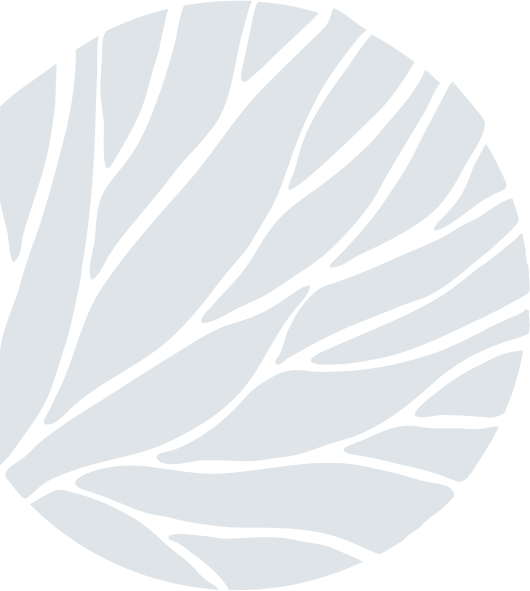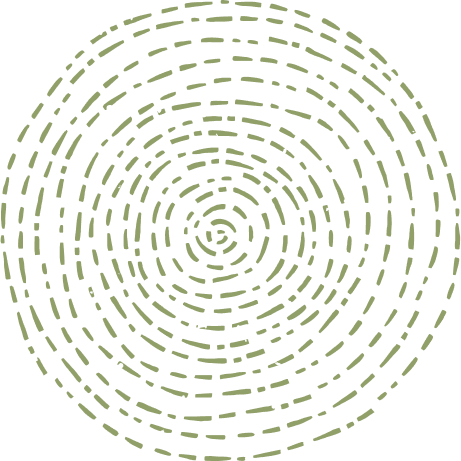When Tourism Meets Conservation
on Jul 12, 2022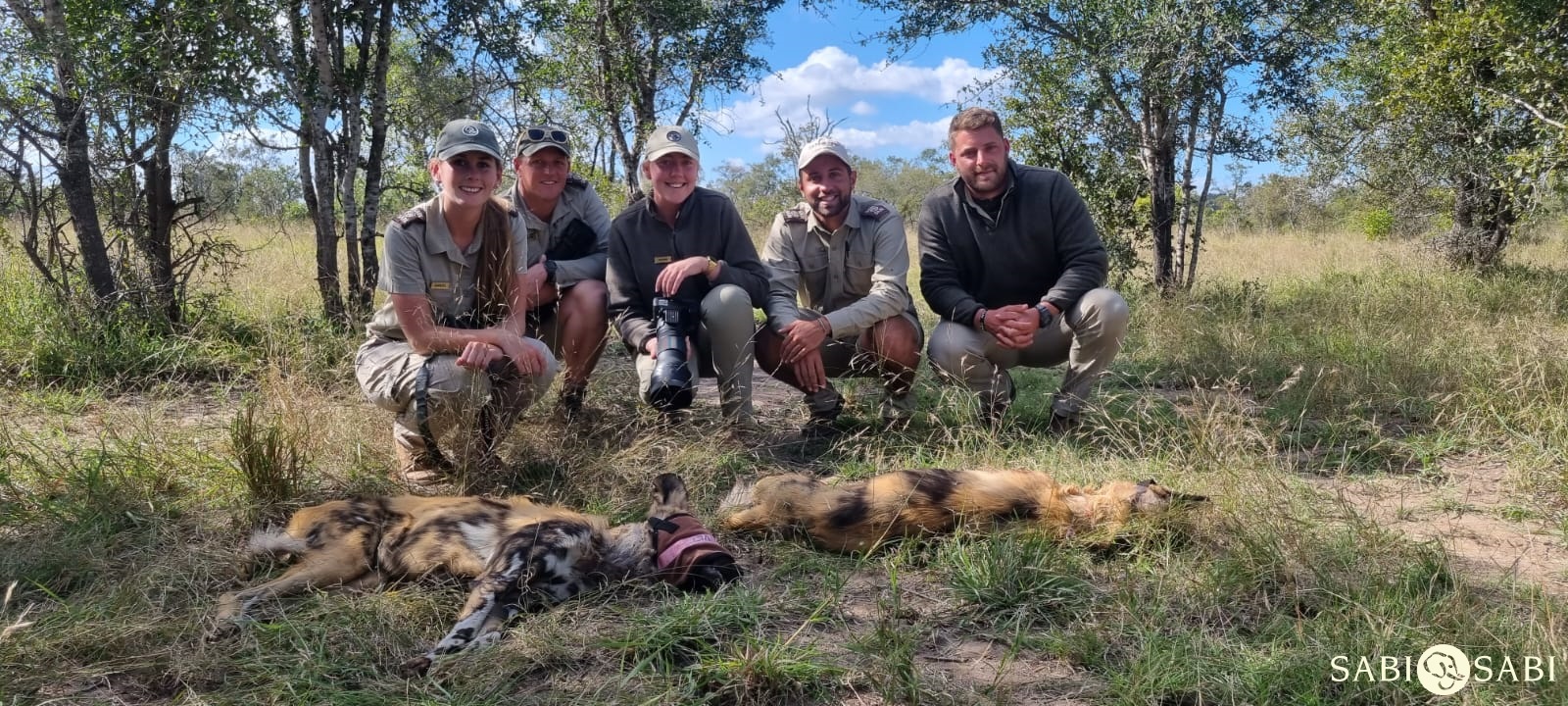
When most guides start out, we join the industry as we want to make some sort of a difference in conserving our natural areas and by large, do so on a day-to-day basis. We share our love, passion and knowledge of our wilderness areas with guests hoping to plant a seed within our guests that will grow and be shared with generations. On Saturday 11 June 2022, driving around with guests tracking animals did make the world of difference for South Africa’s most endangered carnivore, the African Wild Dog.

Late on Friday afternoon, as the sun was setting, the call came over the radio, “there is audio for Wild Dog around Earth Lodge”. Wild Dog contact call with a drawn-out, “Whooo Whoooo Whooo Whooo” calI. I had photographic guests Julia and Penny on the vehicle with me. I understood Julia had never had the opportunity to photograph Wild Dog before, so this call got my attention. I mentioned to them that there was audio for Wild Dog around Earth Lodge, and it was very far from where we were. Knowing it was almost dark and that the Wild Dogs were likely to settle in for the night, I suggested we get out early the next morning and move into the area. Julia had already spent good time with leopard, lion, cheetah, rhino and elephant. I explained it would be high risk as Wild Dogs can cover great distances in a short amount of time but with possible high reward as it’s not easy tracking these very fast unpredictable predators. We all agreed it would be worth it.
Early the next morning we headed out long before sunrise so we could get into the area before the Wild Dogs got active. We immediately moved into the area where the audio had come from, in true Wild Dog fashion there were tracks heading in all directions and it took us a while to figure out their general direction. We eventually established the pack was in an area just north of Earth Lodge which was challenging to navigate with a vehicle. Again, we all agreed to keep trying.
It wasn’t long after this we got a call on the radio, one of the other vehicles had spotted the pack exiting the area. By the time we got there, visual had been lost. We eventually found the pack running down the road and Julia managed to get her first few shots of the African Painted Wolves, as they are also referred to as. There was so much excitement on the vehicle!
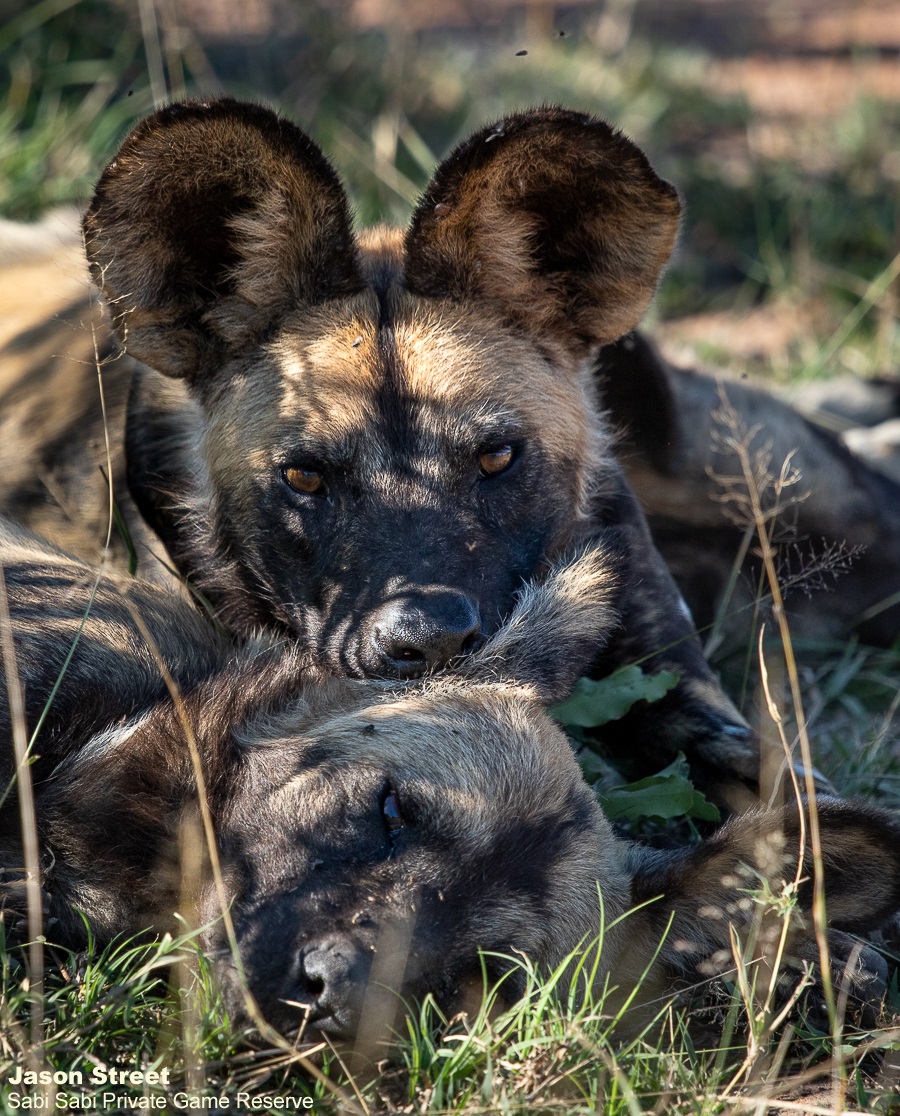
Once things settled down, we realised there were two dogs with snares. This was bittersweet. We had achieved our goal in finding and photographing the Wild Dogs but seeing them with a snare around their neck is something I had never come across before and I never wanted to. Management was immediately contacted, and we were instructed to not lose visual of the pack and stay with them until they settle down in the late morning to allow a vet to get onto the reserve to dart and clean out the wounds.
Wild Dog cover massive distances in search of prey. In covering these large distances, they sometimes leave the safety of protected reserves like Sabi Sabi in search of prey. Snares are a severe threat to the species. In and around protected areas, snares are laid by poachers to catch antelope. These snares don’t discriminate and catch Wild Dogs and other endangered species. Fortunately, these Wild Dogs were able to make it back onto Sabi Sabi where there is very good monitoring, guides with guests, as well as an extremely strong anti-poaching unit. We were very quickly able to get the right people involved and save these beautiful, endangered animals.
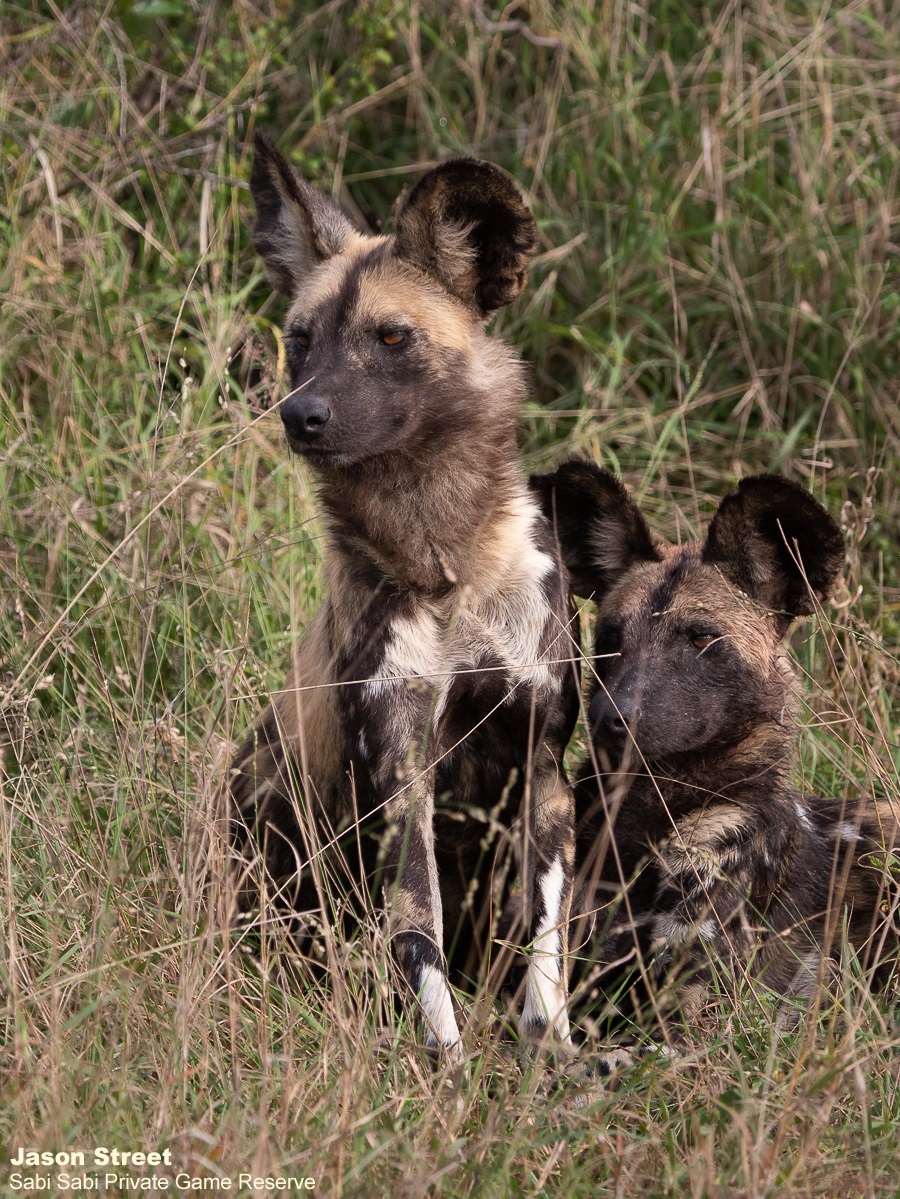
The team is extremely experienced and completely took control knowing exactly how to get the job done. The team of vets drove in close to where the Wild Dogs were resting. We were asked to hang back until the Wild Dogs were secured and blindfolded, so we did not stress them out. The two dogs with snares were darted and went down quickly. The team carried them into the shade and checked all the vitals. Once they were happy, we were allowed in to come and be part and witness this team doing what they do best, save our wildlife.
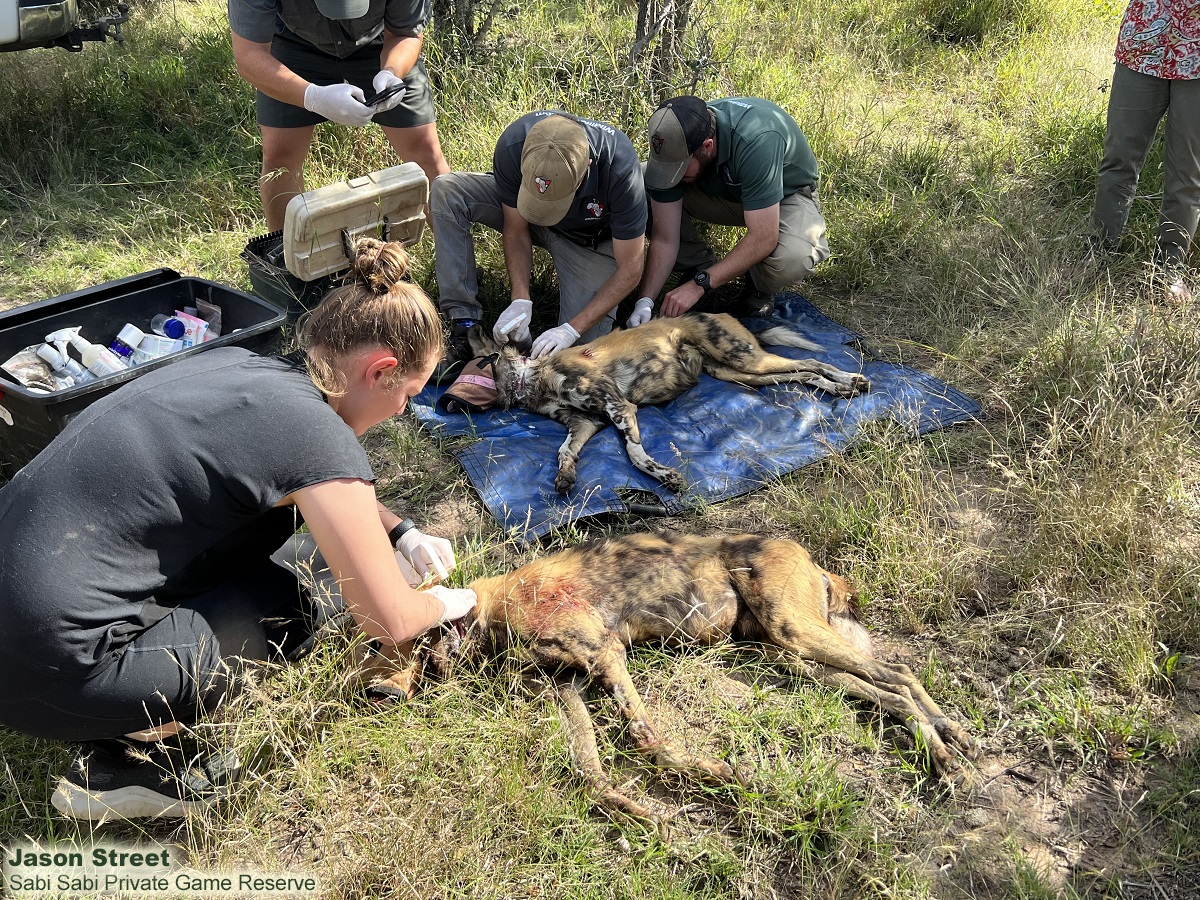
The wire snares were removed with pliers.
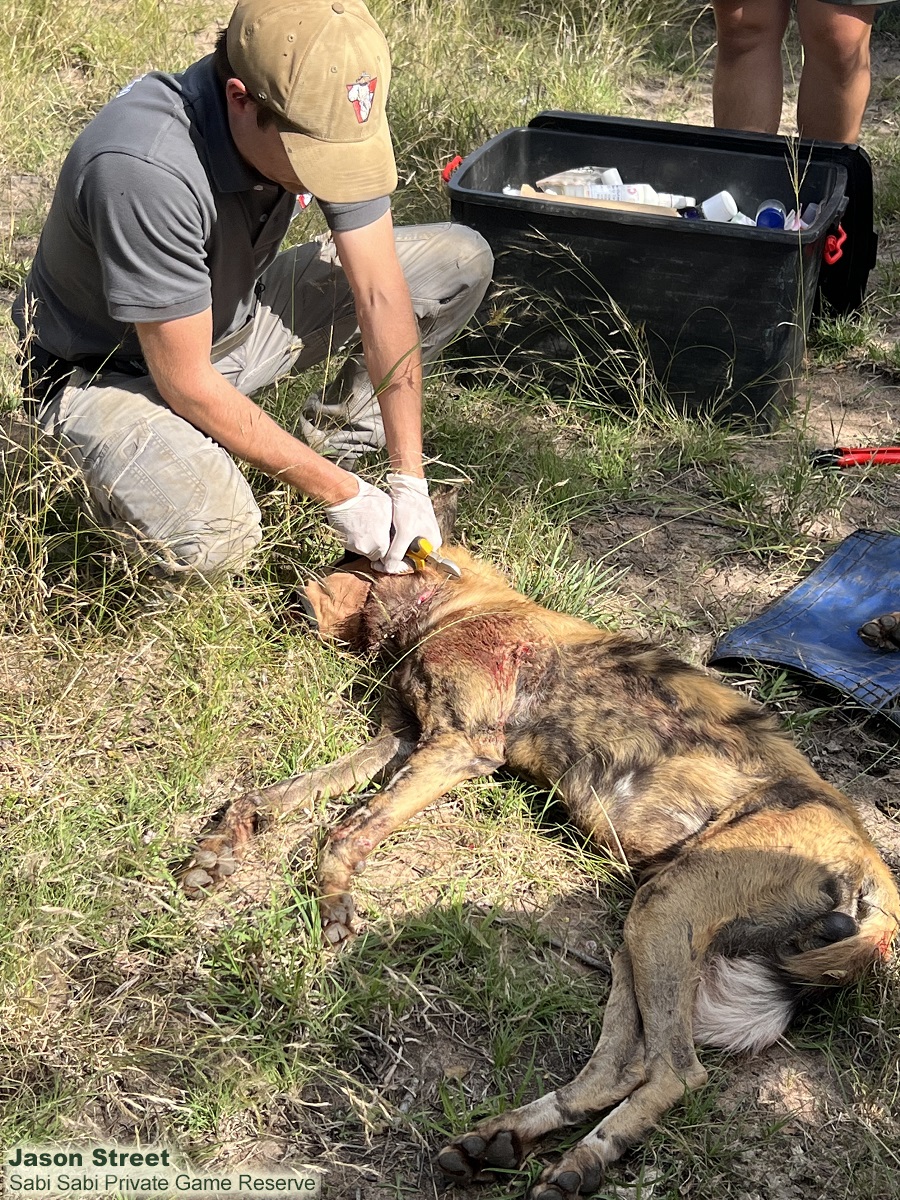
Snares are made from wire or anything strong enough to restrain an animal that walks through it.
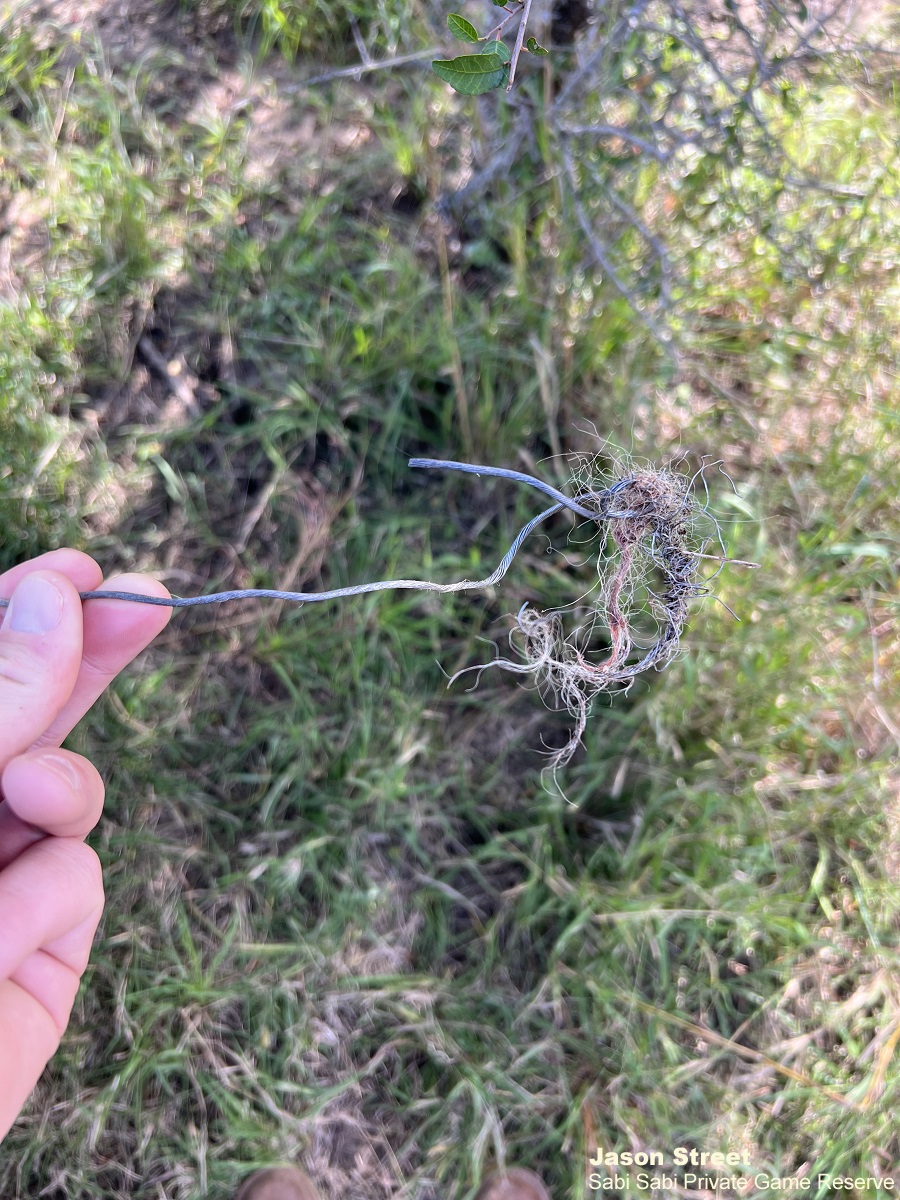
The damage caused by these snares is terrifying. Fortunately, in this case, there was no damage to the trachea or any of the vital arteries. The veterinary team cleaned out the wounds. The wounds are not stitched closed as this could lead to infection.
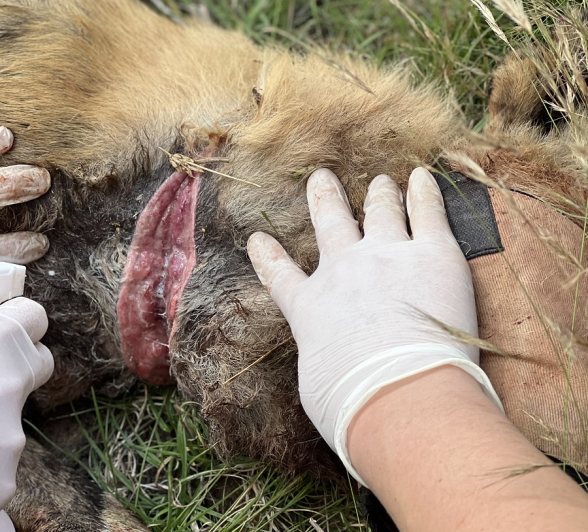
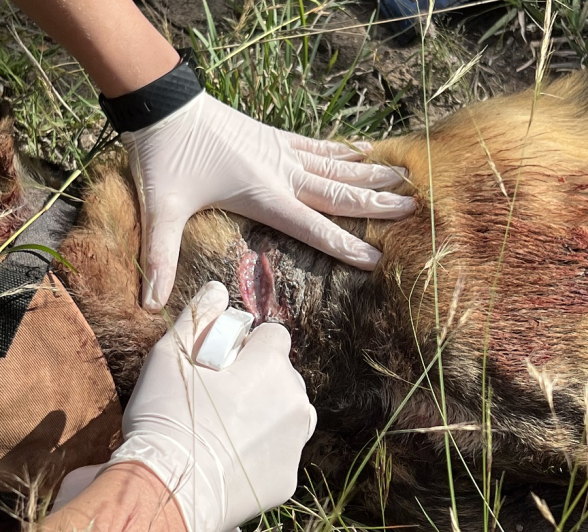
Being up close to the Wild Dogs gave us an opportunity to have a good look at some of the finer details that we don’t often get to see, like below the paws and a good look at the dentation of this successful predator.
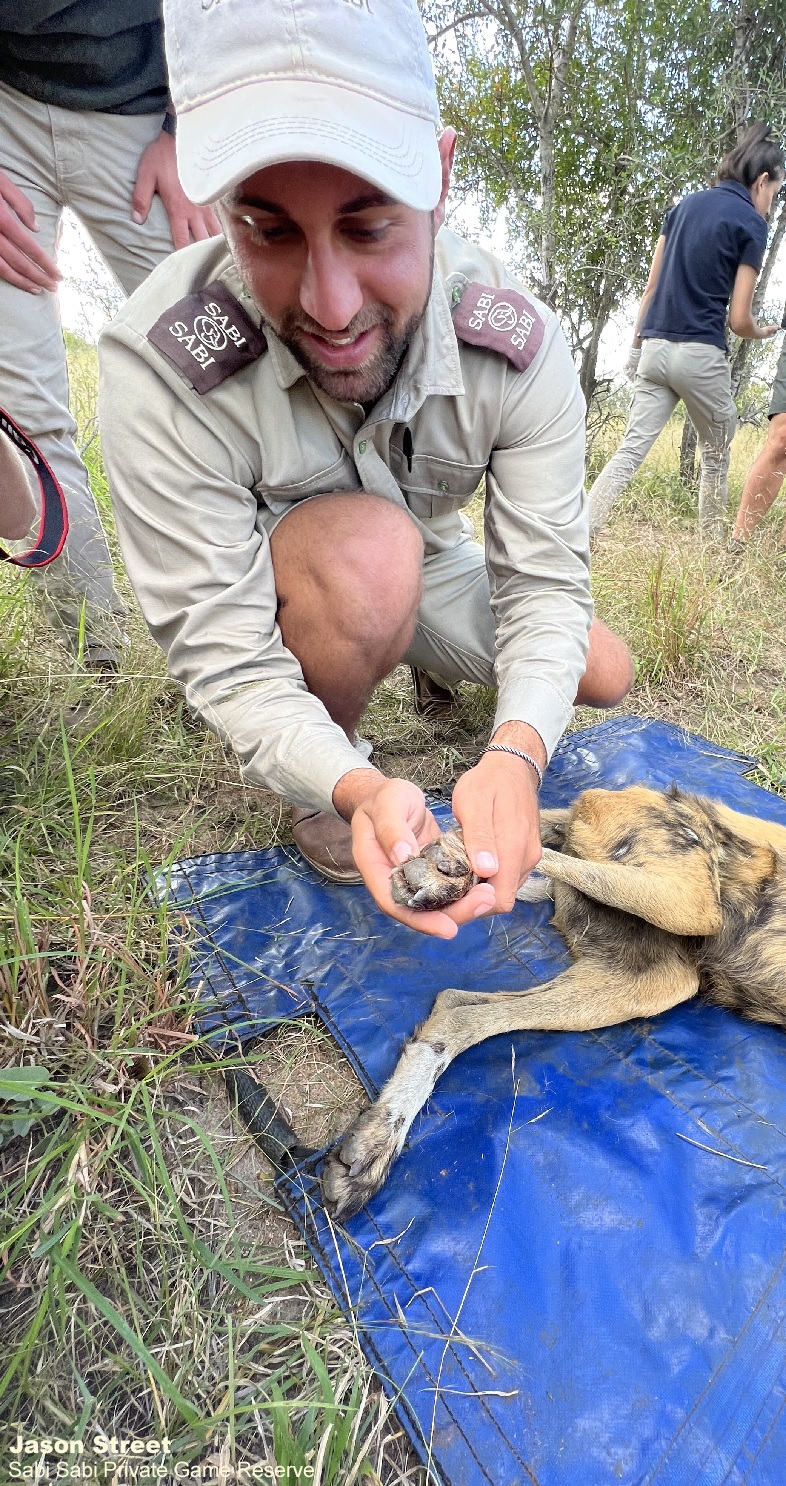
The paws of the Wild Dog are typically dog-likened in appearance. The tracks show four toes with sturdy claws on both front and hind feet. These claws usually leave clear marks in the sand. The two middle toes of front and hind feet lie parallel to one another with a light gap between them. The main pad is triangular in shape and the posterior has two symmetrical, yet indistinct lobes.
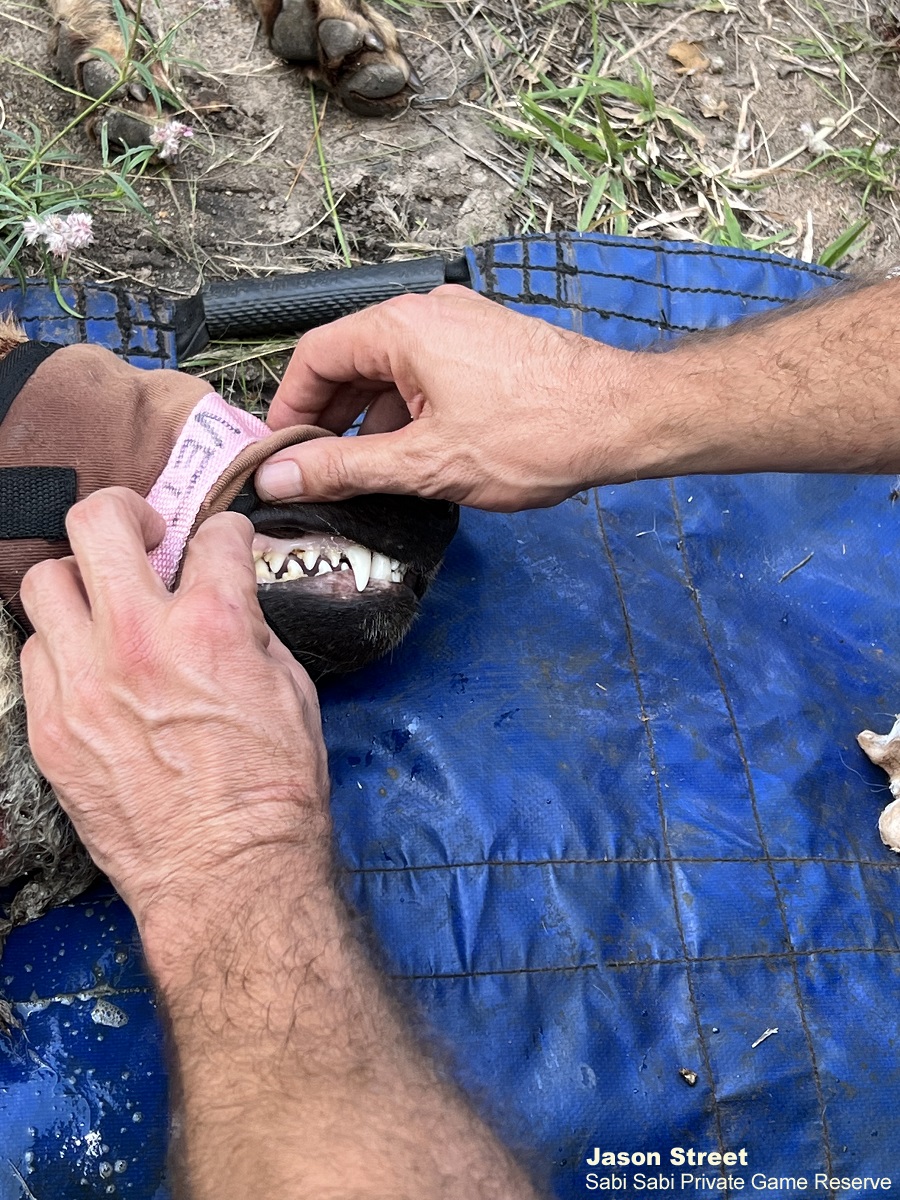
Thank you to the Endangered Wildlife Trust (EWT) who made this all possible!
For myself, it was a privilege to be able to witness and to play some small part in the conservation of these animals and is allowing me to live my dream in conserving these wilderness areas and the incredible species that inhabit it.





